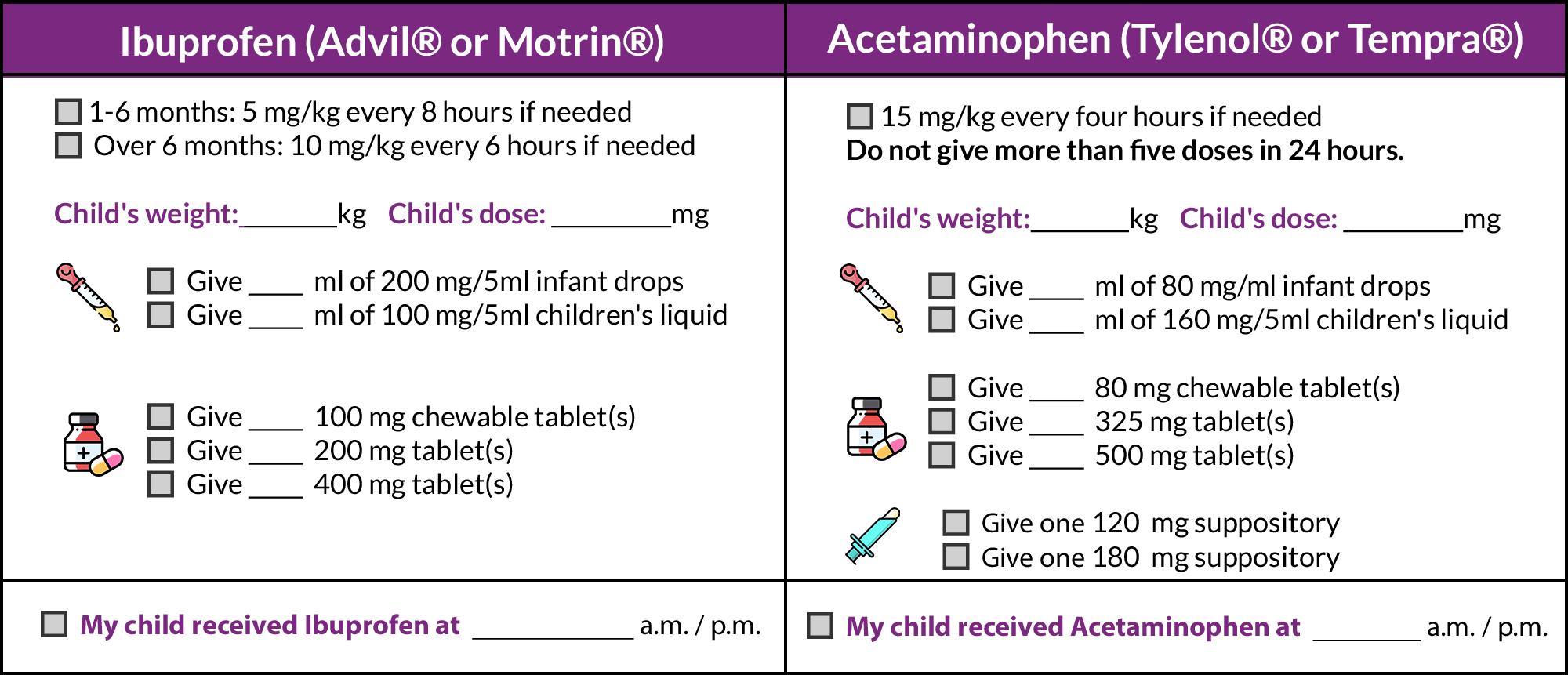
For best results make sure background graphics are enabled.
| Table of contents |
|
How will my child or teen get IV antibiotics? Return to the Emergency department if you notice How do I know if the infection is getting better? |
Your child has an infection that must be treated with IV antibiotics. Giving the medication intravenously (IV) is the best way to treat this infection. Antibiotics can cause minor side effects like an upset stomach or diarrhea.
Call 911 if your child or teen has a hard time breathing or develops swelling of the lips or tongue.
How will my child or teen get IV antibiotics?
Your child or teen will need several doses of the IV medication after leaving the ED. We’ll use a saline ‘lock’ on the IV, so that you can go home with out any IV tubing. When the next antibiotic dose is due, the IV tubing can be connected to the saline lock. This way, your child or teen won’t need to be poked again. You will need to come back to the ED for treatments, or we will arrange for a home care nurse to give the antibiotics in your home. We’ll make a plan based on the services available, and what is best for your child or teen.
▢ Return to the Emergency Department (ED) every hours for doses.
Dose 1 - Date: Time:
Dose 2 - Date: Time:
Dose 3 - Date: Time:
Dose 4 - Date: Time:
Dose 5 - Date: Time:
Dose 6 - Date: Time:
- Return to the ED 30-60 minutes before each dose. You’ll only need to pay for parking once each day. Get a receipt when you pay for parking at your first visit. When you return later that day, bring the receipt to the Security office before leaving CHEO.
- When you arrive, go to the Triage desk and then register. A nurse will then give the medication. You’ll be able to go home after.
- If the IV comes out, come back 30-60 minutes before the next dose is due so we can start another IV.
- After dose , you’ll need to stay in the ED until one of our physicians can reassess your child or teen. After the nurse has given the medication, the physician will check to see how your child or teen has been responding to the treatment. Most times after this reassessment, we can remove the IV and your child or teen can start on oral antibiotics (taken by mouth).
▢ IV therapy at home every hours for doses (for Ontario residents with a valid health card).
Dose 1 (in the Emergency Department after the IV is inserted) - Date: Time:
- We will send a referral to the CCAC (Community Care Access Centre) for IV medications at home.
- A CCAC case manager will contact you either in person in the ED, or by phone to assess your needs and explain the homecare process (see the CCAC Peripheral IV’s for Children info sheet).
- If you have not heard from the CCAC or the homecare agency within 1-2 hours before the next dose is due, return to the ED for the medication.
- If the IV comes out, contact the homecare agency. The homecare nurse will either insert a new IV at the CCAC nursing clinic or ask you to return to the emergency department to have the IV restarted. Call 911 if your child or teen has a hard time breathing or develops swelling of the lips or tongue.
- Return to the Emergency Department after dose , so an Emergency Physician can reassess your child or teen. Go to the Triage desk and then register. Most times after this reassessment, we can remove the IV and your child or teen can start on oral antibiotics (taken by mouth). Date: Time:
Return to the Emergency department if you notice:
- increasing redness around the infected area, past the marking made by doctor or nurse (more than 2 cm)
- new, high fever
- red streaks moving away from the infected area
- increasing pain, pus or drainage
How do I know if the infection is getting better?
It takes up to 48hrs (2 days) for the medications to start working. You should notice that your child or teen has less pain, redness and swelling as the treatments continue. Children and youth will return to their “normal selves” as the treatment continues. To monitor the infection, the doctor or nurse may outline the area of redness with a pen.
How do I care for the saline lock at home?
To protect the saline lock:
- keep it dry
- keep it covered with the bandage from the ED
- do not let your child play with or pull on the dressing
If the IV catheter accidentally comes out, don’t worry. Press in the site firmly for 2-3 minutes until the bleeding stops, and then apply a bandage. Come to the ED 30-60 minutes before the next medication dose to have it restarted or call your homecare nurse if your child has been getting treatments at home.
Pain and fever
Medicines for fever and pain come in different concentrations (the number of mg of medicine in each mL, tablet or suppository). Check the concentration on the bottle, and read the package directions carefully. If you're unsure, contact your pharmacist or primary care provider so they can help you.

Numbers to know
Please call the Emergency department if you have any questions about the treatment or the saline lock : 613-737-2328. CCAC (Community Care Access Centre) can be reached at 613-310-2222.




